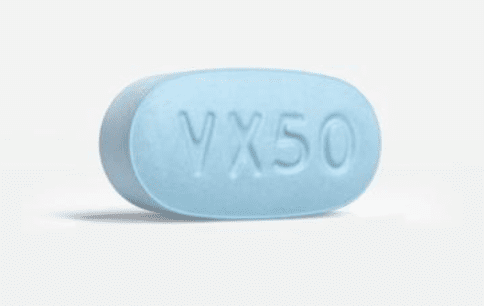Suzetrigine Dosage
Medically reviewed by Drugs.com. Last updated on Feb 18, 2025.
Applies to the following strengths: 50 mg
Usual Adult Dose for:
Additional dosage information:
Usual Adult Dose for Pain
Initial dose: 100 mg orally once
Maintenance dose: 50 mg orally every 12 hours, with or without food
Duration of therapy: Should be used for the shortest duration, consistent with individual patient treatment goals
Comments:
- Administer maintenance dose 12 hours after the initial dose.
- Using this drug for the treatment of moderate to severe acute pain has not been studied beyond 14 days.
Use: For the treatment of moderate to severe acute pain
Renal Dose Adjustments
- Mild and Moderate Renal Dysfunction (estimated GFR 15 mL/min/1.73 m2 or greater): No adjustment recommended
- Severe Renal Dysfunction (estimated GFR less than 15 mL/min/1.73 m2): Avoid use
Liver Dose Adjustments
- Mild hepatic impairment (Child-Pugh A): No adjustment recommended
- Moderate hepatic impairment (Child-Pugh B):
- Dose 1 (initial dose): 100 mg orally once
- Dose 2 to 4: 50 mg orally every 12 hours, with or without food.
- Dose 5 and subsequent doses: 50 mg orally every 24 hours, with or without food.
- Severe hepatic impairment (Child-Pugh C): Avoid use
Note:
- Administer starting dose on an empty stomach at least 1 hour before or 2 hours after food. Clear liquids may be consumed during this time (e.g., water, apple juice, vegetable broth, tea, black coffee).
- Administer second dose 12 hours after the initial dose, with or without food.
- Administer the fifth dose and subsequent doses 12 hours after the fourth dose, with or without food.
Dose Adjustments
Dosage Modifications for CYP450 3A Inhibitors:
- This drug is contraindicated in patients taking strong CYP450 3A inhibitors.
- Recommended dose reduction in patients taking moderate CYP450 3A inhibitors:
- Dose 1 (initial dose): 100 mg orally once
- Dose 2 to 4: 50 mg orally every 12 hours, with or without food.
- Dose 5 and subsequent doses: 50 mg orally every 24 hours, with or without food.
Precautions
CONTRAINDICATIONS:
- Concomitant use of this drug with strong CYP450 3A inhibitors
Safety and efficacy have not been established in patients younger than 18 years.
Consult WARNINGS section for additional precautions.
Dialysis
Data not available
Other Comments
Administration advice:
- Swallow whole and do not chew or crush.
- Initial dose: Administer on an empty stomach at least 1 hour before or 2 hours after food to avoid delay in onset of action. Clear liquids may be consumed during this time (e.g., water, apple juice, vegetable broth, tea, black coffee).
- Subsequent doses should be administered every 12 hours, with or without food.
- Avoid food or drink containing grapefruit during therapy.
- Administer any missed dose as soon as possible and take the next scheduled dose at the recommended time.
- If two or more doses are missed, take 100 mg, and then take the next scheduled dose at the recommended time.
- Patients with moderate hepatic impairment or taking moderate CYP450 3A inhibitors should take the missed dose as soon as possible. If the next dose is in 6 hours, skip it and resume the next dose as usual.
Storage requirements:
- Store at 20C to 25C (68F to 77F) with excursions permitted to 15C to 30C (59F to 86F).
Monitoring:
Hepatic: Hepatic impairment
Patient advice:
- Read the US FDA-approved patient labeling (Patient Information).
- Inform your health care provider about all the medications you are taking, including any herbal supplements or vitamins.
- Avoid consuming food or drink containing grapefruit.
More about suzetrigine
- Check interactions
- Compare alternatives
- Reviews (24)
- Side effects
- During pregnancy
- Drug class: miscellaneous analgesics
- Breastfeeding
- En español
Patient resources
Other brands
Professional resources
Related treatment guides
See also:
Further information
Always consult your healthcare provider to ensure the information displayed on this page applies to your personal circumstances.


